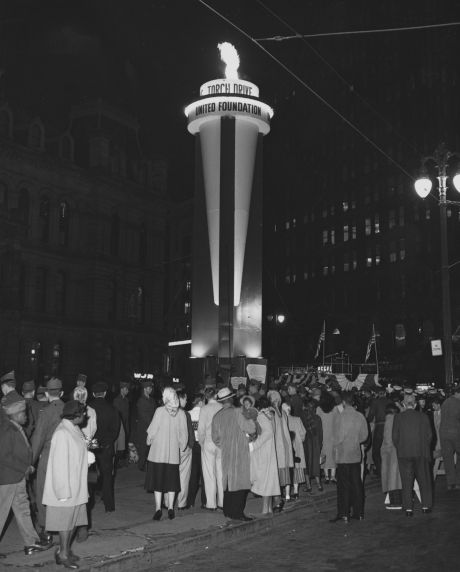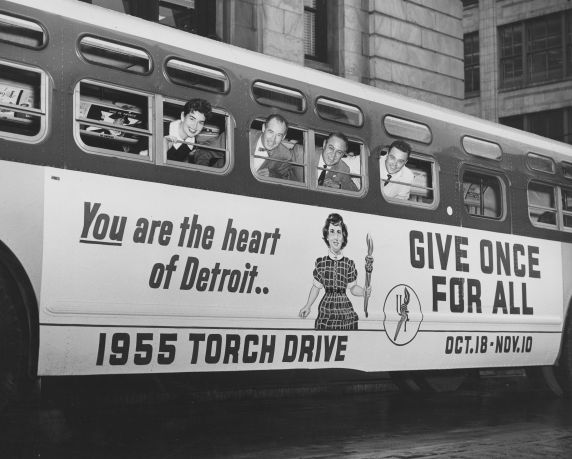United Way for Southeastern Michigan: 100 Years of Giving
In 2017, United Way for Southeastern Michigan (UWSM) celebrated a major milestone: 100 years of continuous promotion of social services to those in need. In addition, the organization’s 10-year plan Agenda for Change concludes this year. Targeting the greater Detroit region, it focuses on access to education, income, and basic needs in continuation of its long-standing fundraising efforts. As we head into Fall and the start of UWSM’s traditional giving campaign season, it’s a perfect time to reflect on the impact they’ve had on charitable giving in metropolitan Detroit.
How did it all start?
Beginning with the formation of the Detroit Community Union in 1917, UWSM’s fundraising arm helped support the activities, initiatives, events, programs, and partnerships of the organization’s social services mission. As the Detroit Community Union underwent several name changes and mergers on its way to becoming UWSM, its fundraising efforts similarly evolved. First known as the Detroit Community Fund, then the War Chest during WWII, and then Community Chest of Metropolitan Detroit following the end of the war, it spun off as an independent organization known as the United Foundation (UF) in 1949. Its main purpose was to raise funds through a campaign known as the Torch Drive. The first ever Torch Drive, so named through a city-wide contest, kicked off on October 18 and concluded on November 10, 1949.
The Torch
A visible representation of the fundraising drive was built by organized labor-donated workmanship at Woodward and Jefferson – a torch, 54 feet high with an 8-foot gas flame. For the first 20 years, the wooden structure would be erected each Fall to mark the start of major campaign giving and it would remain lit through the end of the campaign. In 1969 it was replaced with a permanent metal sculpture by the artist Dario Banucci. While the UF would once again merge with the Detroit Community Union (then known as United Community Services of Metropolitan Detroit) in 1995 to form United Way Community Services (direct predecessor of UWSM), the physical symbol of the torch remains. Now, no longer a gas flame, but an LED light, the torch stays lit year-round.
A Bold New Idea
The concept of uniting year-round charitable solicitations from various local and national organizations into one large annual community fundraising drive was the brain child of Walter Laidlaw, first vice-president and general manager of the United Foundation. In 1952, Laidlaw recalled that “we were commissioned by the people of Detroit to dispel the chaotic charity situation and restore order to the financing of voluntary health and community services.” The first of its kind in the country, the Detroit Experiment quickly became a model for other communities (2,200 by 1973) and redubbed the Detroit Plan. Joined from its inception by local business, civic, and labor leaders, like John S. Knight, Benson Ford, Fred C. Matthaei, George Romney, and Walter P. Reuther, the UF benefited greatly from major industry supporters such as the UAW and the Big Three automakers, which extended its reach into the workplace. Of the $9,247,045 raised in the first year, their salaried and hourly employees alone contributed 47.5% of pledges. Combined with corporate giving, this amounted to 80% of overall funding to 143 different agencies.
Getting the Word Out
From the beginning, the UF pulled out all the stops in getting the word of the Torch Drive out to the public. Promotional efforts included posters, bus cards, billboards, radio and television PSAs, newspaper ads, event entertainment, and even a TV documentary, It's Happening, starring The Supremes in 1967. The popular and succinct tag line ‘Give Once for All,” was used for many years as the idea of united giving took hold in the community. In 1969, a campaign song was created, featuring vocals from Carly Simon. A few lines are copied below:
We're All We've Got
Trouble doesn't stay in place
It knows its way around
Birmingham down to the Pointe
There's trouble to be found.
Mt. Clemens knows, Dearborn too.
Hurt isn't in a name
There's a pain you understand
Cause people hurt the sameWe're all we've got
Hard times trouble people need each other
We're all we've got
Reach out your hand, give it to your brother
We're all we've got
C'mon now, we all need each other
The year 1956 saw the introduction of Miss Torchy, an official campaign representative, chosen by a panel of judges from candidates entered by area businesses. National figures and much fanfare accompanied the opening of the first campaign. The Torch Lighting Ceremonies included Frankie Laine singing God Bless America at the luncheon meeting, a huge parade composed of participating agencies, the lighting of the Torch by U.S. Army General Mark Clark, and a giant rally at Olympia Stadium for 8,000 volunteer solicitors. Subsequent years followed similar schedules of events and saw involvement from such national celebrities as Danny Kaye, Ed Sullivan, Gordy Howe, Jonathan Winters, Tennessee Ernie Ford, Walter Cronkite, Gregory Peck, Audrey Hepburn, and Liberace.
A statement, written by the UF in 1973, sums up best the groundbreaking organization’s efforts and still rings true of UWSM today: “Raising and conserving dollars to meet community needs … both current and foreseeable … is the business of the pioneering United Foundation. Its past is bright. Its future promises to be even brighter.”
To further research the history of the United Way for Southeastern Michigan, consult this list of collections here at the Reuther: UWSM Collections.
To learn more about the UWSM today, visit their website: http://unitedwaysem.org.


 Reddit
Reddit Facebook
Facebook LinkedIn
LinkedIn